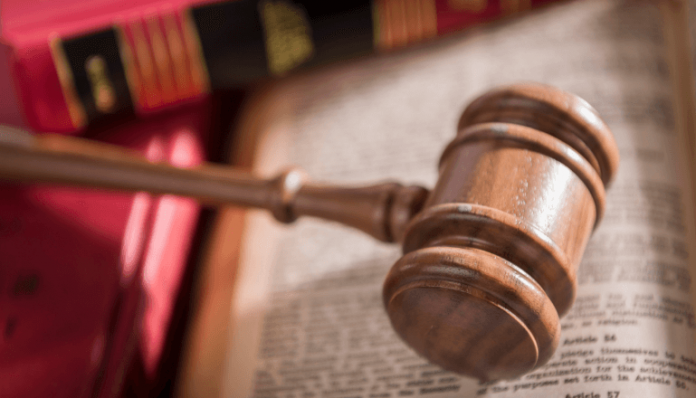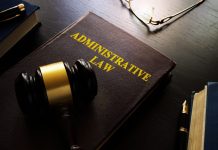This article is written by Amrit Kaur, a student of Dr. B.R. Ambedkar National Law University, RAI, Sonepat. The article talks about the strong and weak forms of judicial review.
Introduction
The development of the contemporary welfare states, as well as the rise of regulatory processes, has resulted in increasing government involvement over many aspects of citizens’ lives, and in such a scenario the power of judicial review is and must be vested in the courts.
Therefore, judicial review plays a very significant role in today’s world, and accepting its importance, in this article, we will be having a look at what judicial review is, followed by a discussion on weak and strong forms of judicial review.
Judicial review – an overview
A judicial review is a form of court proceeding in which a judge reviews the legality of a public body’s decision or action. In other words, judicial reviews are a challenge to the procedure by which a decision was reached, rather than the rights and wrongs of the result itself. It is the authority exercised by a country’s courts to scrutinize the acts of the legislature, executive, and administrative branches of government and to ensure that such actions are consistent with the provisions of the nation’s Constitution.
Judicial review in India
The British reforms aided India in developing its current legal structure. The collection of institutions created by the concept of constitutionalism includes the Parliament, the Judiciary, and the Executive apparatuses such as bureaucracy and the police, as well as the formal framework of Union-State relations and the election system.
The Indian judiciary is a single integrated and unified system of courts for the Union as well as the States, which administers both Union and State legislation, with the Supreme Court of India at the apex of the whole system. The growth of modern nation-states and constitutionalism may be traced back to the establishment of the judicial system.
The Indian judiciary performs a crucial function as the guardian of the constitutional ideas bestowed upon us by our founding fathers. The judiciary attempts to rectify the harm done by the legislature and the executive, as well as to give every citizen what the Constitution promises under the Directive Principles of State Policy. All of this is made possible by the power of the judiciary, i.e., the power of judicial review.
The rule of law is the foundation of democracy and the court has major responsibility for its execution. This is now a fundamental component of every constitution, which cannot be changed even by the exercise of additional parliamentary powers. It is the responsibility of the judiciary, to guarantee that democracy is inclusive and that everyone who possesses or exercises public authority is held accountable.
Judicial review is regarded as part of the basic structure of the Indian Constitution. It is also known as the Indian judiciary’s interpretational and observational role. With the repeal of the locus standi principle, suo moto cases and public interest litigation (PIL) has permitted the judiciary to intervene in numerous public affairs even when there is no complaint from the injured party.
The judicial review is important because the Constitution’s supremacy must be maintained. It is critical for preventing potential abuses of power by the legislature and executive. It safeguards people’s rights. Moreover, it keeps the government’s federal structure in balance, ensures the judiciary’s independence, and precludes the executive’s tyranny.
It is to be noted here that there is no specific provision in the Constitution allowing courts to nullify laws, but the Constitution has imposed precise restrictions on each of the organs, the violation of which renders the legislation void. The court is tasked with determining whether any of the constitutional limits have been violated or not. However, some of the constitutional provisions that support the judicial review process are:
- Article 372(1) provides for judicial review of pre-constitutional law.
- Article 13 states that any law that violates any of the provisions of the part of Fundamental Rights would be declared null and void.
- Furthermore, under Article 32 and 226, the Supreme Court and High Courts respectively, are entrusted with the responsibilities of protecting and guaranteeing the fundamental rights of the citizens.
Types of judicial review
Reviews of legislative actions
This review implies the authority to ensure that legislation approved by the legislature complies with the provisions of the Constitution.
Review of administrative actions
This is a mechanism for enforcing constitutional discipline on administrative agencies as they carry out their powers.
Review of judicial decisions
This review is used to correct or alter prior judgments made by the judiciary itself.
Strong judicial review vis-a-vis weak judicial review
- The emergence of innovative mechanisms designed to address and mitigate the tension between rigid constitutionalism and judicial activism on the one hand, and fundamental democratic governing principles on the other, has been one of the most amazing characteristics of the global convergence towards constitutional supremacy and active judicial review. This collection of institutional tools has been dubbed as a “weak-form” of judicial review. However, under the strong form of judicial review, judicial interpretations of the Constitution are binding on all branches of government.
- The weak form of judicial review allows the legislature and executive to limit or circumvent constitutional rulings by the judiciary as long as they do so publicly.
- The United States is the epitome of strong judicial review whereas Canadian law is the epitome of weak judicial review. The difference between these two legal systems becomes apparent when a court overturns legislation based on an interpretation of a constitutional clause and where this interpretation is reasonable, though it is still challenged by the legislature.
- The Canadian Charter of Rights and Freedoms (1982) has two well-known and frequently referenced instances of such mechanisms: the “limitation clause” (Section 1) and the “override clause” (Section 33). The emphasis in Section 1 is on the judicial balancing of rights provisions and other equally essential imperatives. Few constitutional catalogues of rights express the idea that no constitutional right is “absolute” in such a clear way. In the shadow of Section 1, rights litigation and jurisprudence are inherently attentive to macro public policy considerations that are “demonstrably justified in a free and democratic society” and that would fall outside the purview of rights jurisprudence per se, in most other constitutional democracies. The inherent subjection of Canadian rights jurisprudence to wide public policy considerations has led to sound, middle-of-the-road Supreme Court of Canada rulings on a huge number of potentially divisive issues.
- This tendency towards weak-form, dialogical evaluation is not exclusive to Canada. The creators of the new constitutional arrangements in Canada, as well as other Westminster-style political systems such as the United Kingdom, Israel, South Africa, and New Zealand, had to take into account the enduring political traditions of parliamentary sovereignty.
- There are only three ways which can overturn or override a court’s interpretation of the Constitution is a strong judicial review system:
- When the court itself reverses its own decisions.
- Through informal common law evolution, the court can alter its interpretation.
- The Constitution can be amended by a legislative body (or bodies).
On the other hand, the weak judicial review allows these three ways, plus a fourth one also, and the legislature can simply enact the bill anew, “notwithstanding” the constitutional clause or the court’s interpretation of it. In Canada, such an “in-your-face” statute becomes law, but not in the United States.
- The legislators never get to alter court interpretations of constitutional provisions under a pure system with a strong judicial review (other than by means of a new constitutional amendment). However, legislators always get to alter judicial interpretations of constitutional provisions under a pure system with a weak judicial review (simply by passing an in-your-face statute).
Weak courts, strong Rights : Judicial review and social welfare rights in comparative Constitutional law – Mark Tushnet
Mark Tushnet is one of the most influential constitutional theorists of the United States. Like many of his contemporaries, he is sceptical about constitutionalized rights, especially the advantages of judicial supremacy. This goes against the longstanding liberal tradition in American legal and political thought that has hailed the United States Constitution as the pinnacle of the country’s exceptionalism. Tushnet is a major proponent of the concept of “popular constitutionalism,” which contends that the electorate and lawmakers should have the authority over the interpretation of constitutional rights as compared to the judges. In a series of papers and books, he has developed and supported this viewpoint, the most recent of which is “Weak courts, Strong Rights: Judicial Review and Social Welfare Rights in Comparative Constitutional Law”.
Mark Tushnet in his book, has talked extensively about the strong and weak forms of judicial review. Tushnet employs a comparative method. He claims that a weak judicial review system is more democratic and hence better than a strong judicial review system. Tushnet only examined these two models, most likely because they are the most prevalent today. Nevertheless, neither strong nor weak judicial review is the ideal option if a third option is superior. Tushnet considers Canada as having weaker courts and better social and economic rights than the United States, and this contrast appeals to him. Tushnet’s fundamental argument is that the “weak-form” of judicial review has significant benefits over the “strong-form” of judicial review, which is the hallmark of American constitutionalism, especially when it comes to implementing social welfare rights.
Tushnet adds two caveats in his book here. To begin with, he does not believe that strong and weak-form reviews are mutually incompatible. Rather, they exist on a continuum that is defined by the period of time that judicial interpretations of rights are expected to last for. In a weak form of judicial review, mechanisms allow lawmakers to reverse or alter court rulings within a reasonably short time frame. In strong form systems, the process of overturning judicial interpretations is primarily in the hands of judges and it usually takes a long period of time (if it happens at all). Second, a deferential standard of constitutional review should not be confused with a weak form of judicial review. The notion of constitutional review and deference are difficult to reconcile. Deference, on the other hand, is a response to a different question than that of who has final authority over the constitutional meaning and it refers to the breadth provided by courts to lawmakers’ interpretive efforts.
Tushnet refutes a number of common assumptions about the legislature’s institutional and procedural weaknesses, as constitutional interpreters compared to courts, such as that their members are elected, that they have strong incentives to favour majority interests, and that they are not bound to offer reasons for their decisions. Surprisingly, he makes no mention of what may be the most important methodological distinction between courts and legislatures: judges’ obligation and practice of operating through precedent. Even if one thinks, as Tushnet does, that precedent does not mandate legal “solutions” to constitutional concerns, courts contribute to the general debate in society regarding constitutional matters through their precedent discourse. The simple act of assimilation of judges’ and politicians’ discourse appears to devalue that conversation.
Tushnet concludes that positive social and economic rights are recognized in Canadian jurisprudence. This conclusion might surprise many observers who argue that the Supreme Court of Canada should do this, but that it has consistently neglected to do so. On the other hand, Tushnet grounds his case on the Supreme Court’s rulings in Vriend v. Alberta (1998) and Eldridge v. British Columbia (A.G.) (1997). In the first case, the Supreme Court expanded the scope of statutory human rights protection to include discrimination based on sexual orientation. In the second ruling, the court-mandated that governments offer sign language interpreters as part of public health services. Both instances constitute important court recognitions of constitutional positive rights.
Tushnet’s second claim is that weak-form judicial review is better than strong-form judicial review at developing and enforcing social rights. According to him, weak-form review, in general, is better at addressing the issue of courts’ institutional ability to make orders in social policy areas because it recognizes that constitutional interpretation is dialogic and subject to error. Lastly, Tushnet points out at the end of his thesis that there is no clear or essential relationship between strong-form judicial review on substantive constitutional issues and the application of what he calls the so-called “strong” or “weak” judicial remedies.
Conclusion
The strong and weak forms of judicial reviews are the two forms of judicial review recognised today. One cannot claim one to be better than the other, though Tushnet’s famous work claims the weak form of judicial review to be better. But, this whole thing is a subjective matter where no one can firmly claim one form to be better than the other. Moreover, as stated earlier, there might be some other form of judicial review (e.g.- one that is a mixture of both strong and weak forms of judicial review) that is still unknown and might turn out to be better than these two.
References
Students of Lawsikho courses regularly produce writing assignments and work on practical exercises as a part of their coursework and develop themselves in real-life practical skills.
LawSikho has created a telegram group for exchanging legal knowledge, referrals, and various opportunities. You can click on this link and join:
 Serato DJ Crack 2025Serato DJ PRO Crack
Serato DJ Crack 2025Serato DJ PRO Crack










 Allow notifications
Allow notifications



